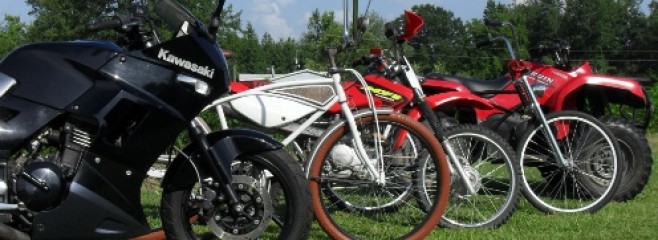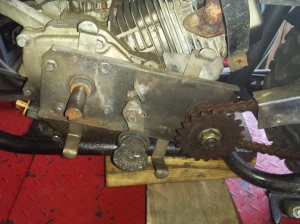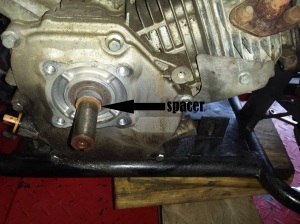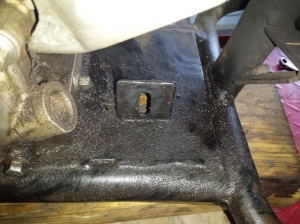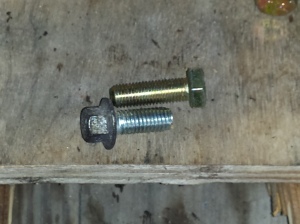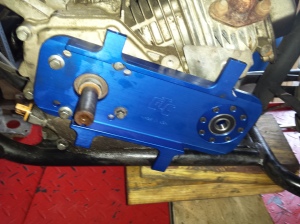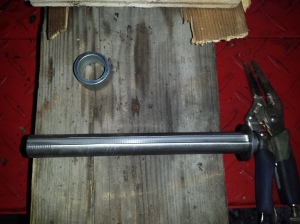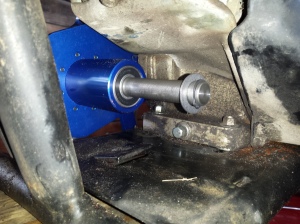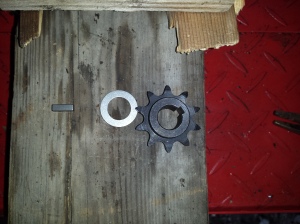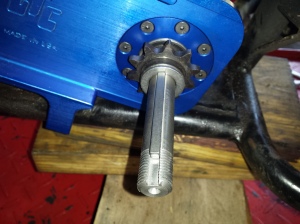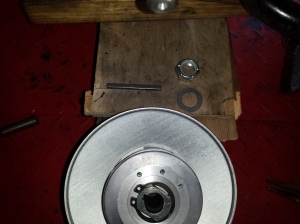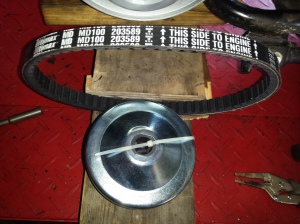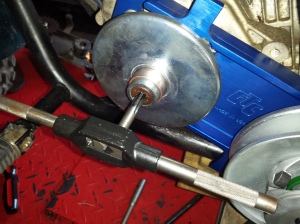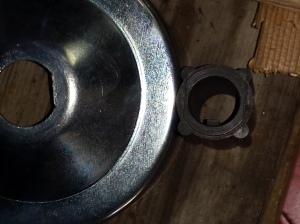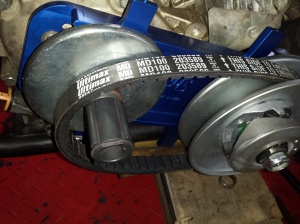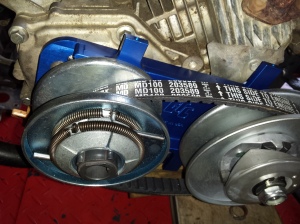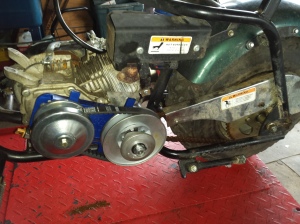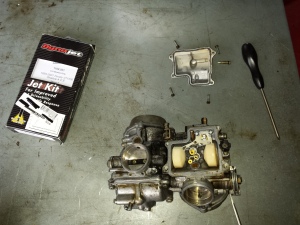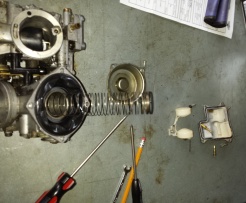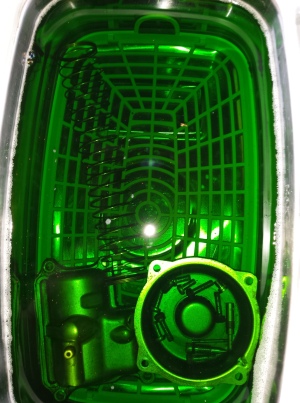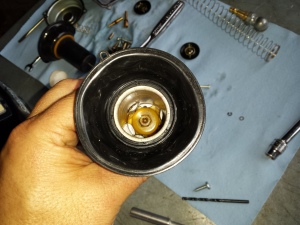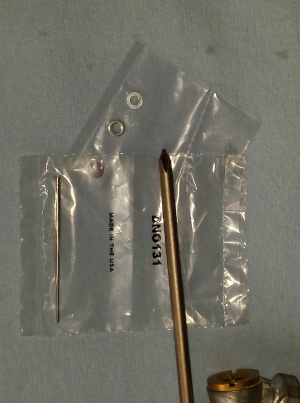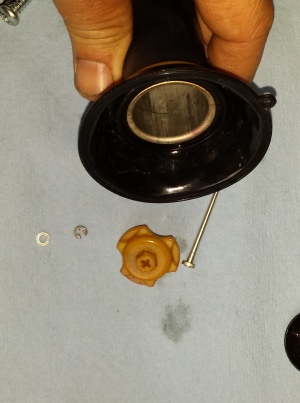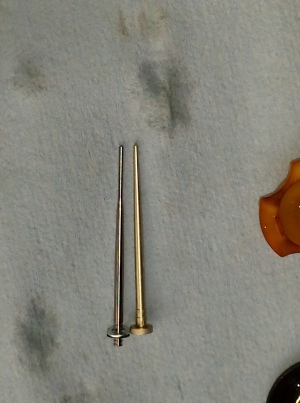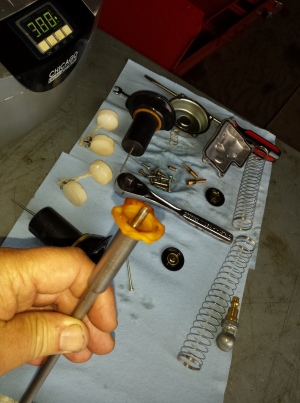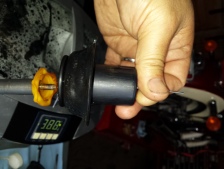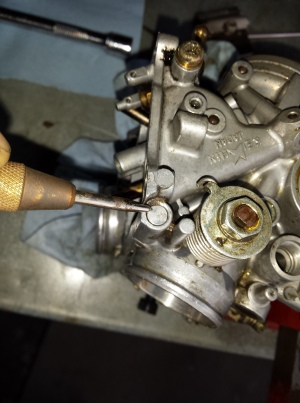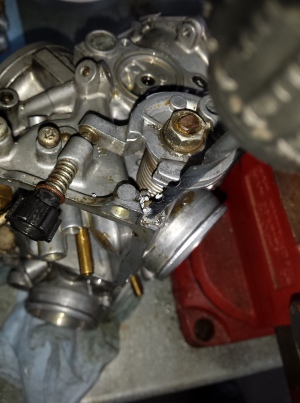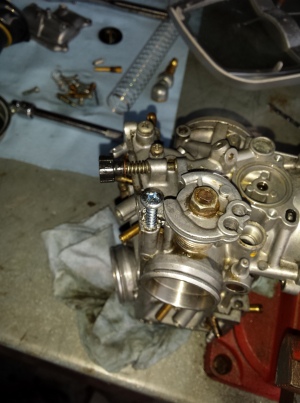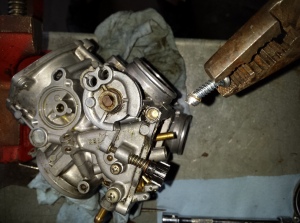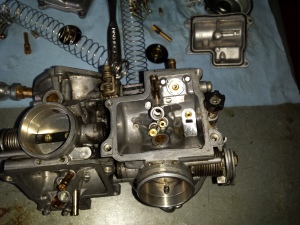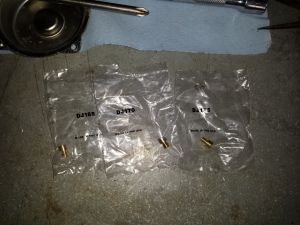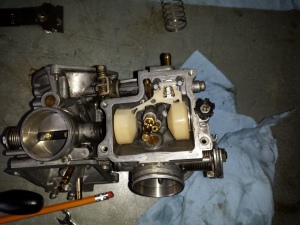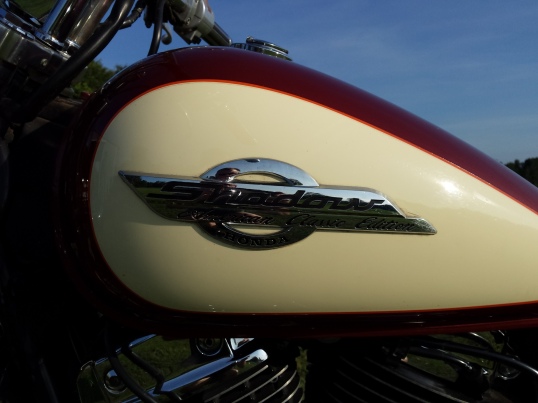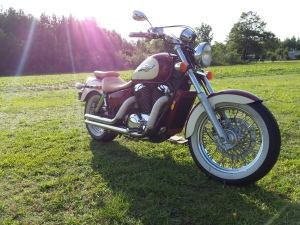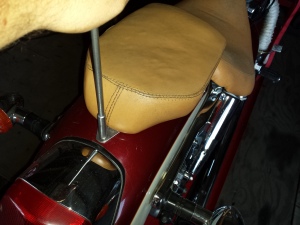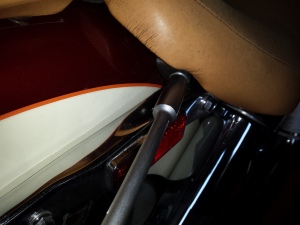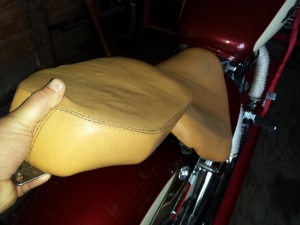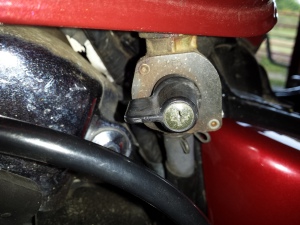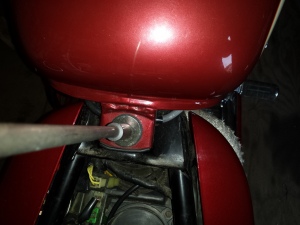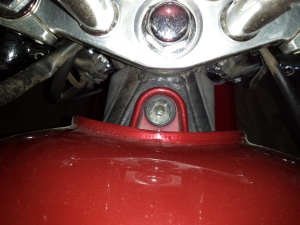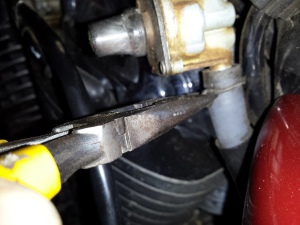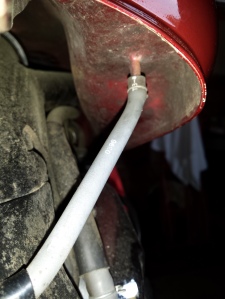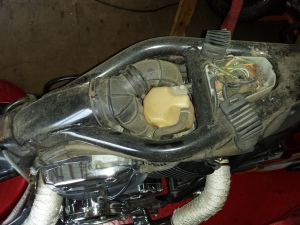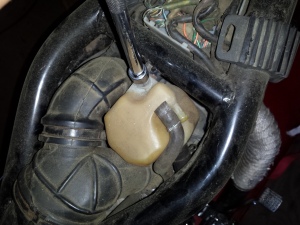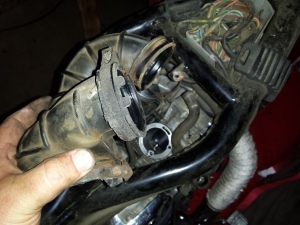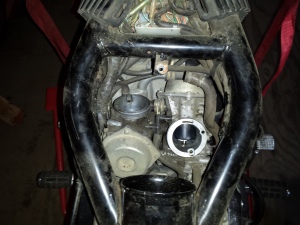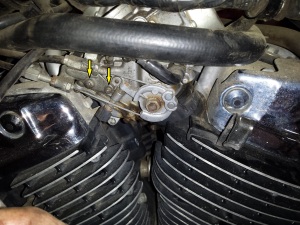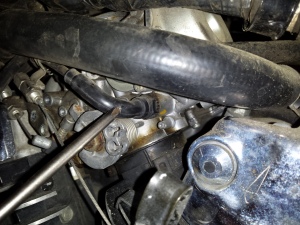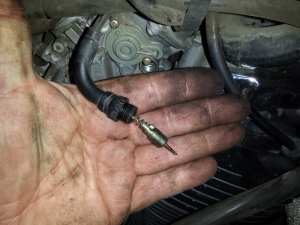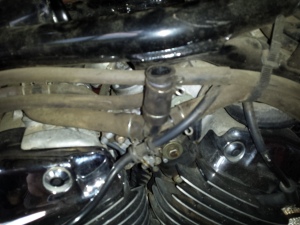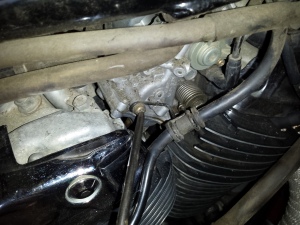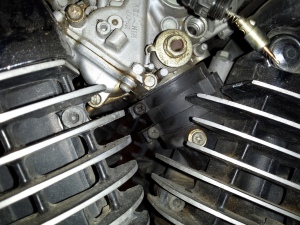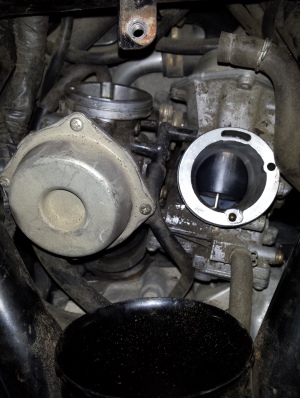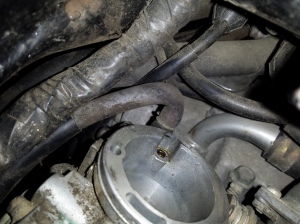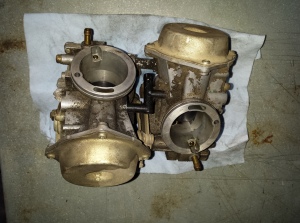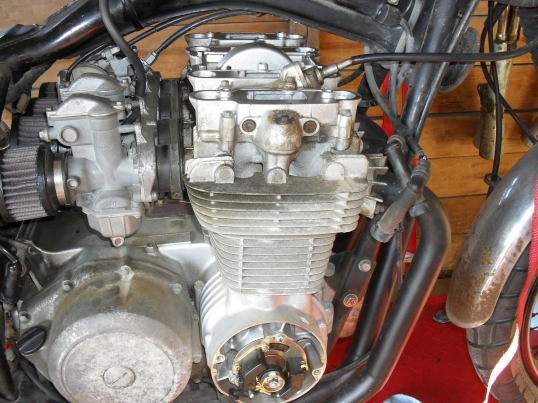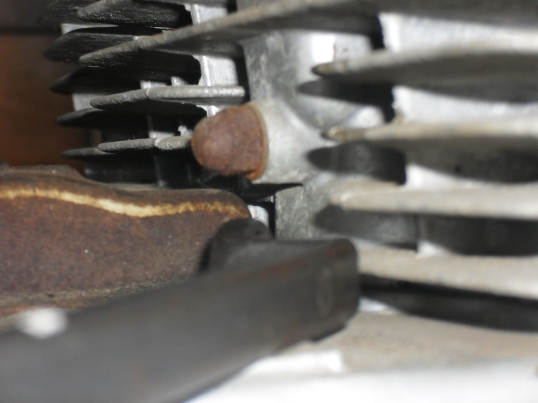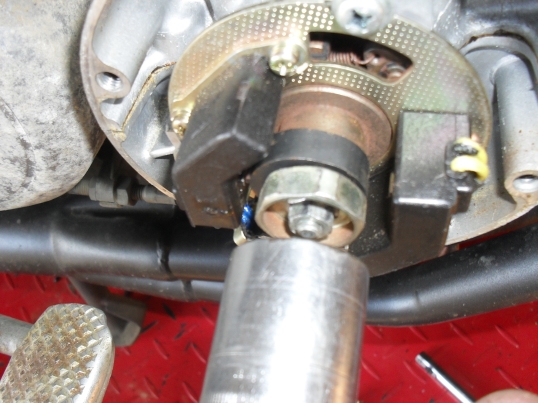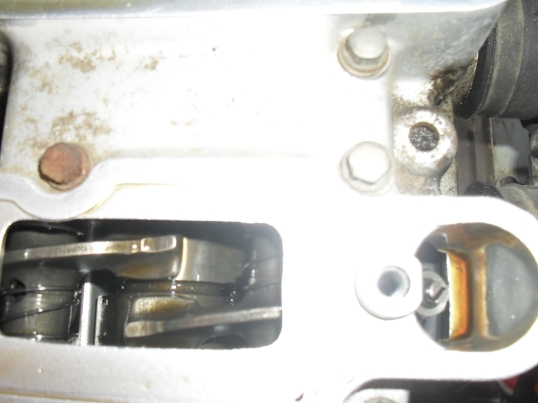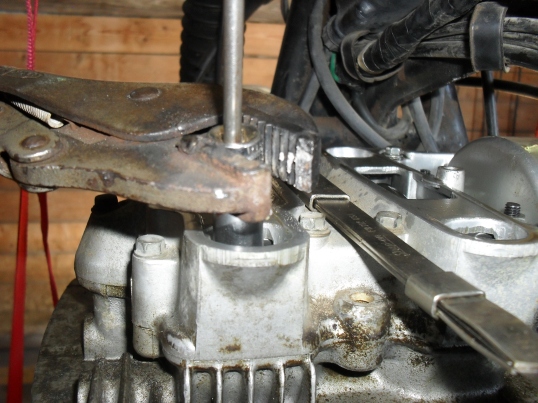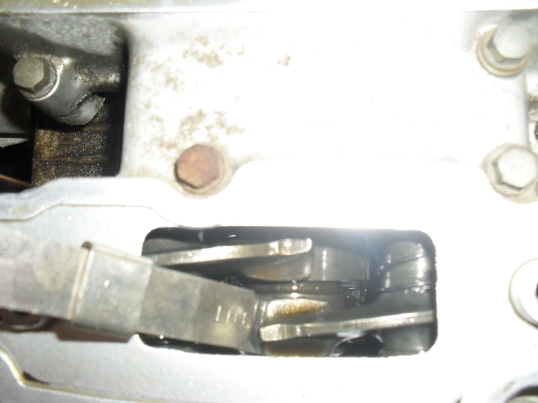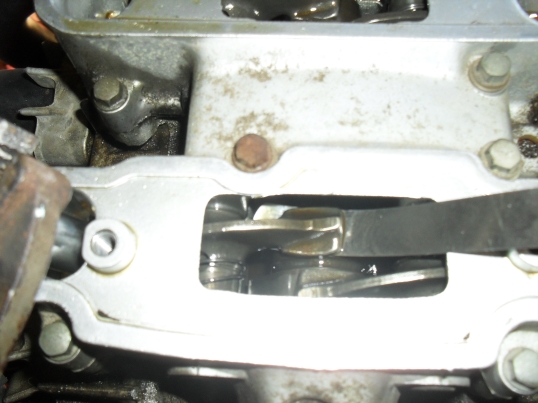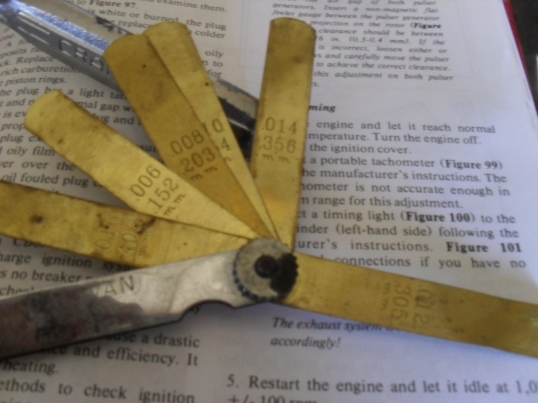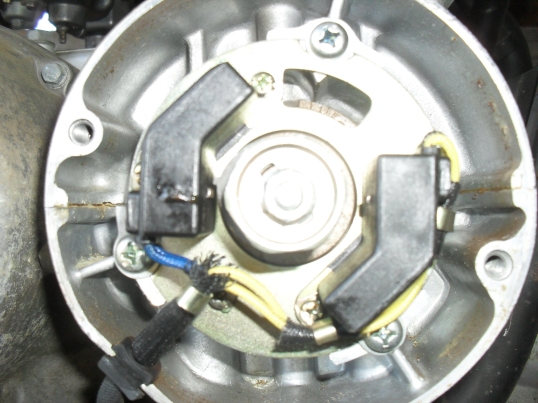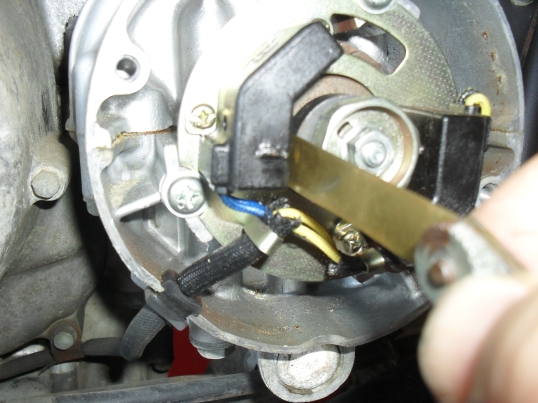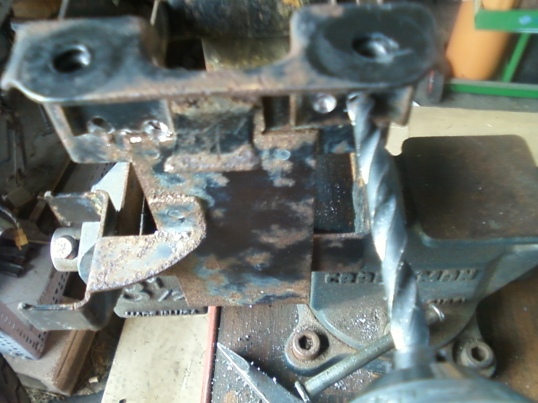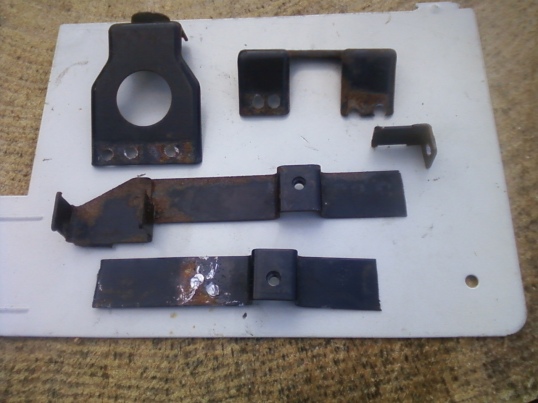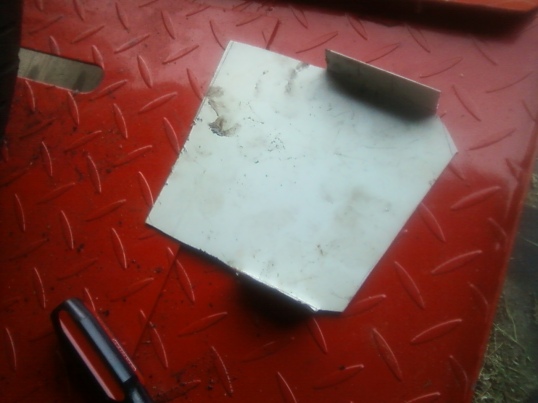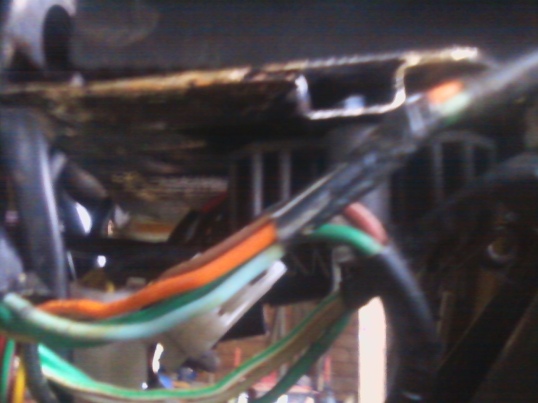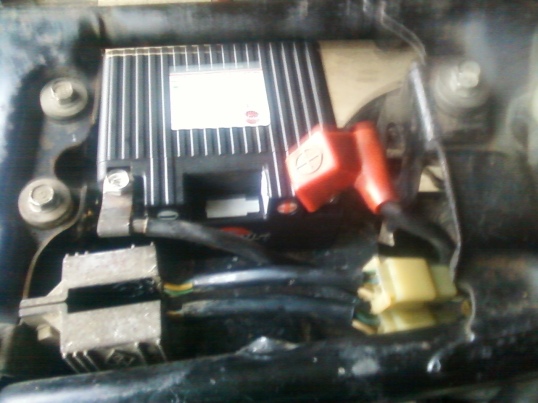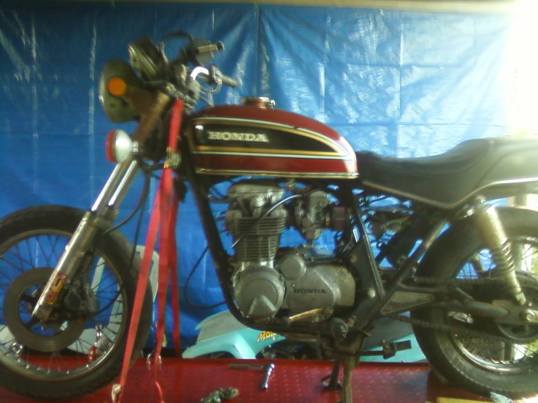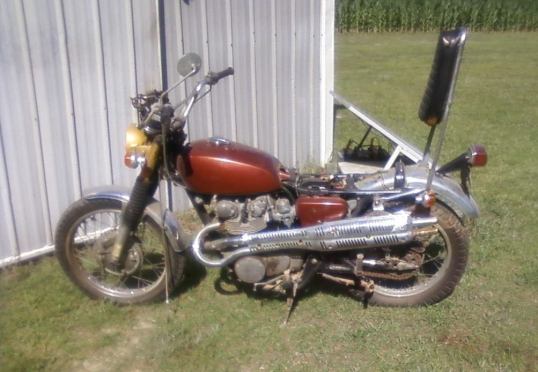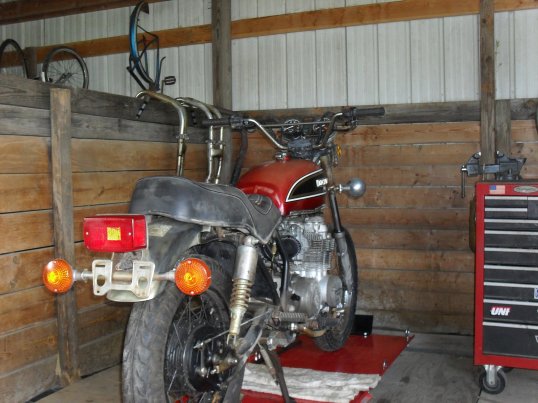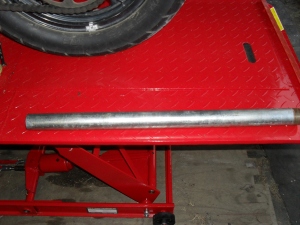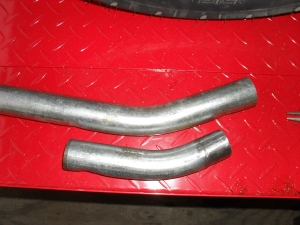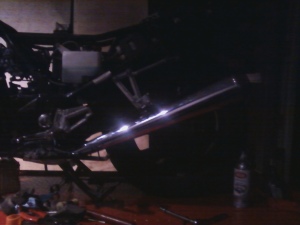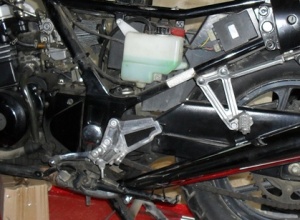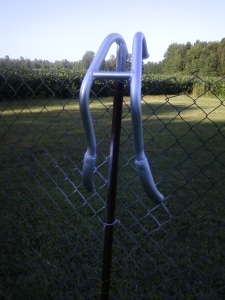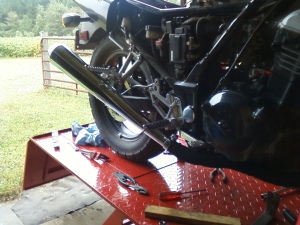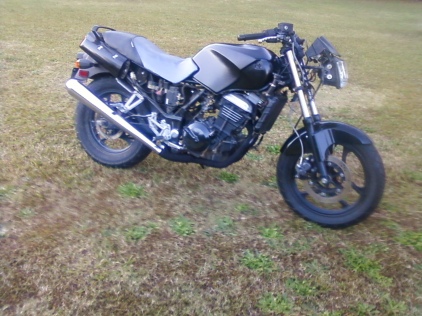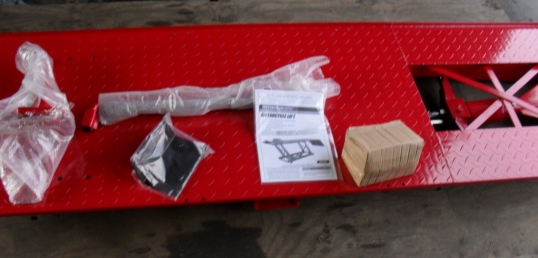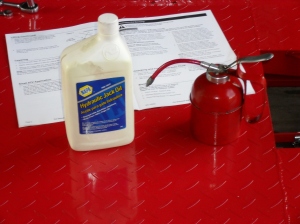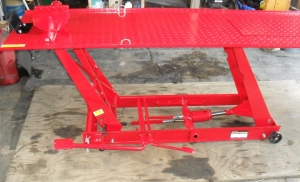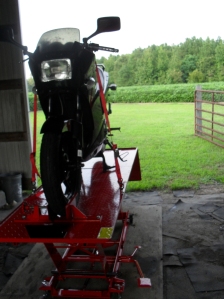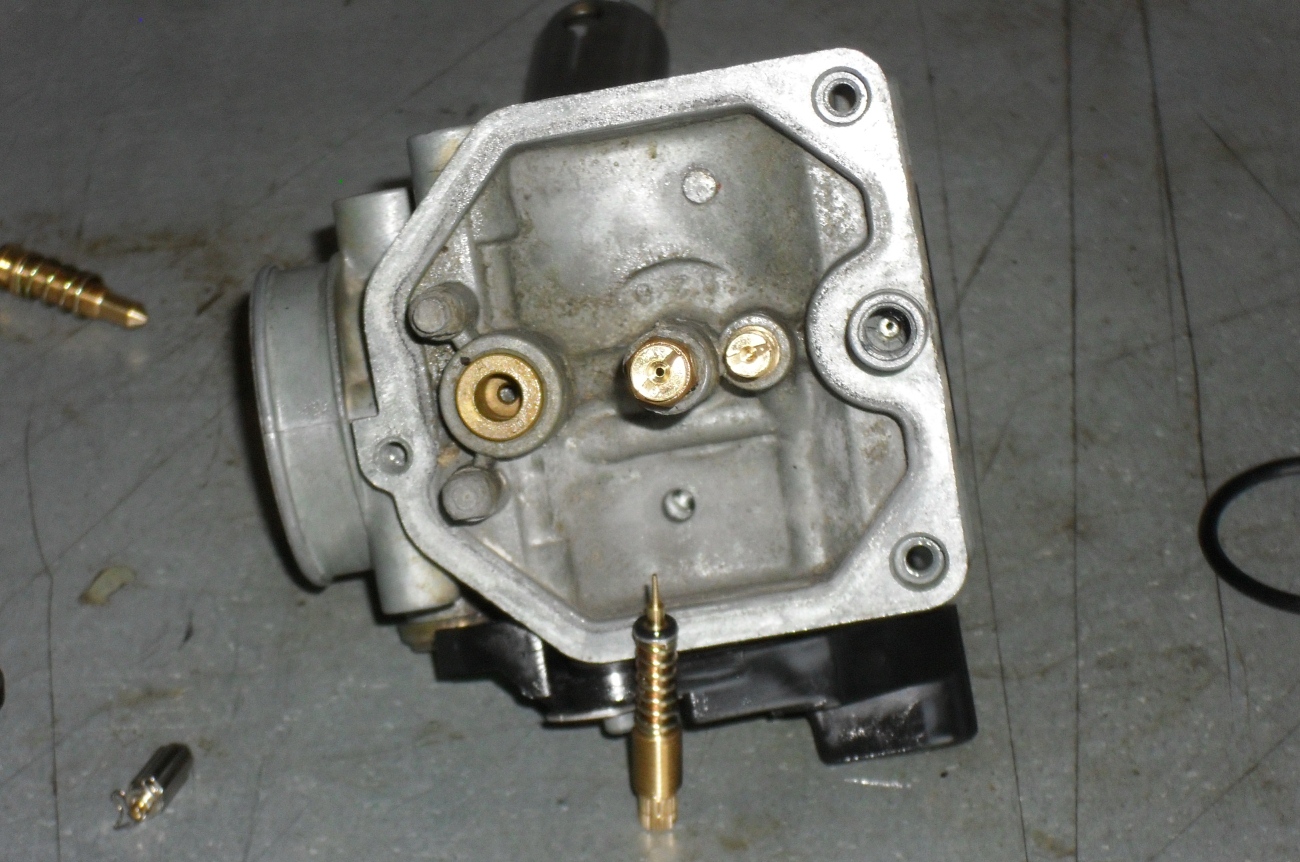Here’s what came in the box. I ordered it from GoKarts USA mainly because it was listed as being a direct bolt on fit to directly replace the cheesy jackshaft plate & tensioner that this minibike came with. Despite what is said on some of the forums around the internet, this is a good quality unit that is made right here in the good old U.S.A. Yeah sure it’s got a couple of imported components in it, but suck it up sunshine that’s just the way the world is, we’re all on one rapidly shrinking planet and the market place is making it smaller everyday despite the best attempts by idiot politicians and knuckle dragging nationalists to stop it. Still it’s nice to see something made here that is of good quality and is price competitive. The backing plate is especially well machined & finished to the point that it is almost a shame to cover it up with a belt guard.
Now this is not going to be a full complete step by step set of installation instructions, just an overview with a few tips. If have lost your kit instructions or have purchased a second hand unit without instructions please click here to get a set from the GTC website. As always you may click on any picture here for a larger view.
First you have to remove the original plate with the factory clutch & intermediate sprocket.
Make sure you remove all of the spacers from the end of the crankshaft, if you are doing this to an older engine oxidation may cause the spacer to look like an integral part of the crankshaft. If you don’t remove it the drive pulley won’t line up and you’ll be scratching your head for a few minutes like I was.
This tab is no longer used and will have to be flattened or removed for the torque converter to fit.
The kit comes with longer bolts to mount the plate if needed.
This particular installation just reused the stock bolts
A picture of the driven shaft with the snap ring and washer installed.
Here it has been started through back of the mounting plate.
Next get the chain sprocket, key & spacer,
and slide them onto the driven shaft as shown here.
The next shot shows the driven pulley with it’s associated hardware, slide it all into place and install the nut finger tight at this time.
Here is the driving pulley & the belt. When you cut the tie wrap to install it take not of how the various parts & pieces fit together so you can re-install them correctly.
I should have cleaned up the screw threads in this hole before I got this far, be sure to learn from my mistakes. BTW your engine must have an existing tapped hole in he end of the crankshaft or you cannot install a torque convertor. Be sure to check this before you spend your money as a few of the Honda clone engines are missing this feature.
The other drive pulley parts
Stick the belt into place & begin assembling the drive pulley onto the end of the crankshaft.
Now that you’ve gotten everything assembled it is time to tighten it all down.
You really need to use a torque wrench and tighten the bolts & nuts to the torque specified in the instructions. Even a cheap one is more than good enough for everything the average home mechanic will ever do. If you over tighten the nut on the driven shaft it will pop the snap ring loose from the other side. Sure GTC could redesign the shaft to eliminate the snap ring but are you prepared to pay an additional 20 or 30 dollars for the kit to cover the cost of the additional machining and wasted material? Just use a torque wrench
and you won’t have to worry about it.
I did this install several months ago and have been driving this thing around the farm at least two or three times a week. While it did not transform my otherwise nearly stock MB165 into a 50 mph speed demon it did bump the top speed up enough to be much faster than a stock Baja minibike. Perhaps on a smooth surface with the governor removed it would but it is already able to outrun it’s own steering and stability out here in the deep soft sand & mud where I live.
Four months ago when I installed this it was purely out of curiosity to see if it would really be an improvement, and it really is. The initial low speed engagement is much smoother than with a factory clutch allowing it to be driven at a lower speed than was possible with the clutch, while still increasing the top speed. The belt has proven durable and still looks fine after four months of hauling my big 200+ pound ass around the farm, down the dirt road, through the woods. And when it does eventually wear out the belt is a little over half the price of a factory clutch. So is this worth spending the extra $200 buck on? If you are serious about actually riding your minibike, the answer is yes especially since the GTC TC2 is a direct bolt on that does not require engine mounting spacers to fit a stock Baja frame. Granted at this price it should come with the plastic belt guard but that really is my only complaint. At this time I’m running mine without the guard for a cool but possibly dangerous open primary look, but I don’t let kids ride it either.
Here’s a little video of the completed minibike so you can see how it works.
Peace Y’all
If you really enjoyed The GTC Torque Converter for Minibikes & Go Karts Installation and Review please visit our sponsor by clicking an ad below.
